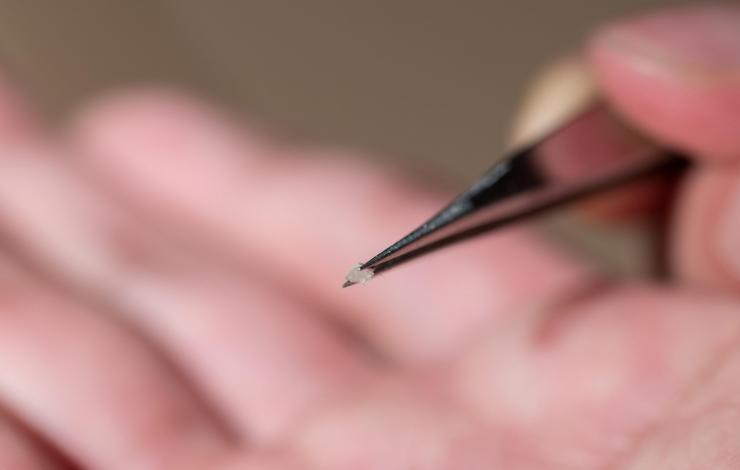Barely visible to the human eye, a breed of microscopic 3D printed robots has been developed at Georgia Institute of Technology. Deemed “micro-bristle-bots” the devices can be be controlled by minute vibrations, making them capable of transporting materials, and detecting changes in the environment. Working together, like ants, the robots’ potential multiplies, unlocking a range of varied applications along the boundaries of mechanics, electronics, biology and physics.
The Georgia Tech team is now looking at ways to scale-up the micro 3D printing method used to make the bots, and produce “hundreds or thousands” of the devices in a single build. The results of the research are expected to have a positive impact in the biomedical sector, where micro-robots are becoming increasingly interesting for micro-assembly and maneuverability within the body.
“We are working to make the technology robust, and we have a lot of potential applications in mind,” comments Azadeh Ansari, assistant professor in the School of Electrical and Computer Engineering at Georgia Tech. “It’s a very rich area [we’re working in] and there’s a lot of room for multidisciplinary concepts.”
Battery-free motion
Georgia Tech’s micro-bristle-bots are made using two photon polymerization (TPP), a method commercially marketed by Nanoscribe and Microlight3D. The machine specifically used by the team is Nanoscribe’s Photonic Professional GT.
A single micro-bot consist of two parts – a piezoelectric actuator, and a 3D printed polymer body. The body of the bristle-bot contains its legs, which move when the actuator starts to vibrate. The exact way the legs move, however, is determined by design. Depending on the angle of the legs, the bots can be tuned to move in a certain direction in response to vibrations. Ansari explains, “As the micro-bristle-bots move up and down, the vertical motion is translated into a directional movement by optimizing the design of the legs, which look like bristles.”
“The legs of the micro-robot are designed with specific angles that allow them to bend and move in one direction in resonant response to the vibration.”
TPP is essential to the team’s approach as it allows them to try many different leg mechanisms. The next step though, is to increase the volume in which they can be produced to explore new applications. Ansari adds, “The process now takes quite a while, so we are looking at ways to scale it up to make hundreds or thousands of micro-bots at a time.”

Further reading
In this current iteration, a single micro-bristle-bot measures approximately 2mm in length, 1.8mm wide and 0.8mm thick, with a weight of about 5mg, any smaller than this, and the team can run into problems removing the bots from the print bed. So far, the basic bot design has been tested in a rudimentary “playground” where researchers studied their movements. Ansari concludes, “These micro-bristle-bots walk nicely in a laboratory environment, but there is a lot more we will have to do before they can go out into the outside world.”
“A 5mg micro-bristle-bot fabricated by two-photon lithography” is published online in the Journal of Micromechanics and Microengineering. The research is co-authored by DeaGyu Kim, Zhijian Hao, Jun Ueda and Azadeh Ansari.

For more of the latest 3D printing released research news sign up to the 3D Printing Industry newsletter, follow us on Twitter, and like us on Facebook.
On the lookout for new talent or seeking a career change? Search and post 3D Printing Jobs for opportunities and new talent across engineering, marketing, sales and more.
Featured image shows a Georgia Tech micro-bristle-bot, penny for scale. Photo via Georgia Tech


